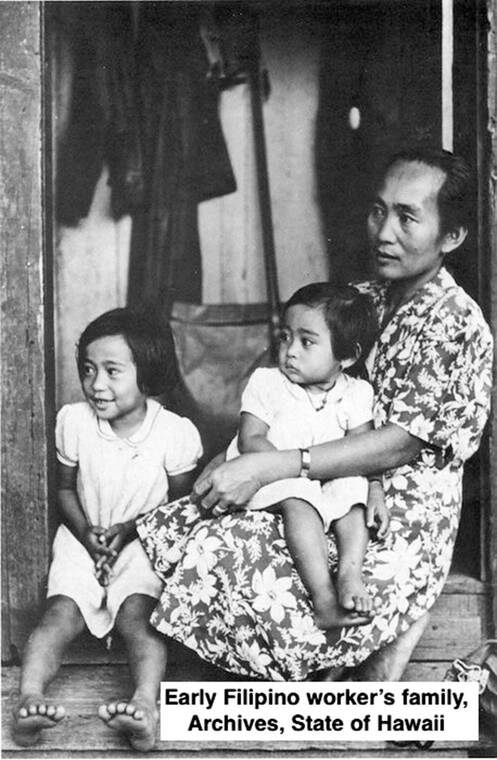My wife Ginger Beralas Soboleski’s ancestral roots in Hawai‘i extend back to her Filipino grandparents, who immigrated to Hawai‘i during the 1920s, after having been recruited by the Hawaiian Sugar Planters’ Association in the Philippines to work in Hawaiian sugar plantations.
One couple of grandparents, Tomas and Mercedes Beralas, were Ilocanos originating from Abra Province and were assigned to Lihu‘e Plantation.
The other, Bernadino and Rita Esquirra, Visayans from Cebu, resided at Kapa‘a Stable Camp, a Makee Sugar Co. and later, a Lihu‘e Plantation housing camp.
But, it had been years earlier, in 1906, that the first group of Filipino contract sugar workers had arrived in Hawai‘i.
Extending back even further in history are the Filipino roots of Kaua‘i’s Malina family.
Its Filipino ancestor, John Malina Sr. (1823?-unk.) arrived in Hawai‘i in the 1860s as a member of a Filipino band touring the Islands.
He then settled on Kaua‘i, where he married Keokilele Halemanu Punana Ukeke (1829-1919) in 1866, and became a paniolo at William Hyde Rice’s Kipu Ranch.
Since his Filipino name was unpronounceable by Hawaiians, they named him John Malina, his surname being their linguistic version of Manila.
Notable among John and Keokilele’s descendants was Nani Malina Alapai (1874-1928), prima donna soprano of the Royal Hawaiian Band.
Another, John Solomon Malina (1885-1940), was famous throughout the islands as a polo player.
And, Sarah Malina Kailikea (1911-2004), opened Menehune Garden with her husband, Melvin, at Papalinahoa, Kaua‘i in 1962.
Then there are the Manilamen, Filipino sailors who sailed on Spanish galleons that crossed the Pacific Ocean between Acapulco, Mexico, and Manila, approximately 1,200 miles north of, and 800 miles south of Hawai‘i, as early as 1565.
A Spanish map, a document, and an artifact found in Hawai‘i indicate that Spaniards had visited Hawai‘i in the 1500s, and Hawaiian legend tends to corroborate Spanish contact prior to Captain Cook’s discovery in 1778.
It’s likely that a galleon blown off course in a storm could have reached Hawai‘i with Manilamen aboard.
On the mainland, Manilamen arrived at Morro Bay, California, in 1587.
Other Manilamen deserted their galleon and established a settlement at Saint Malo, Louisiana, in 1763.





So interesting-want to read more!!!